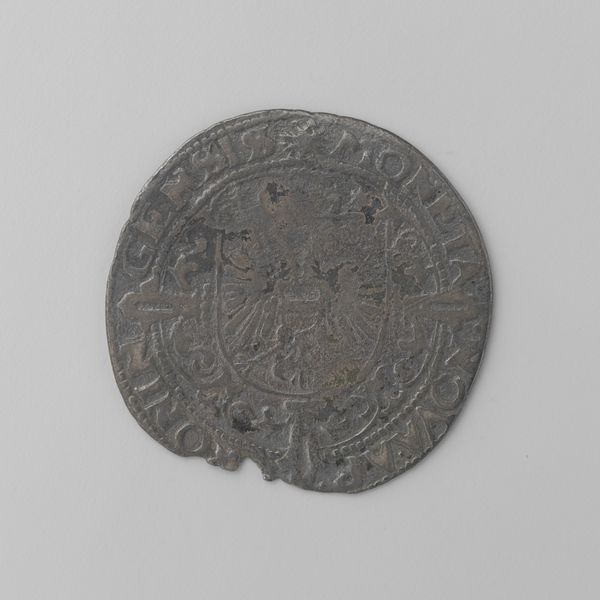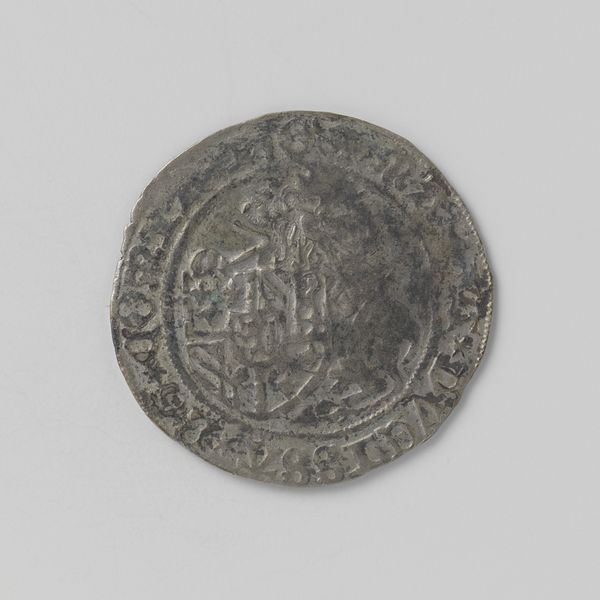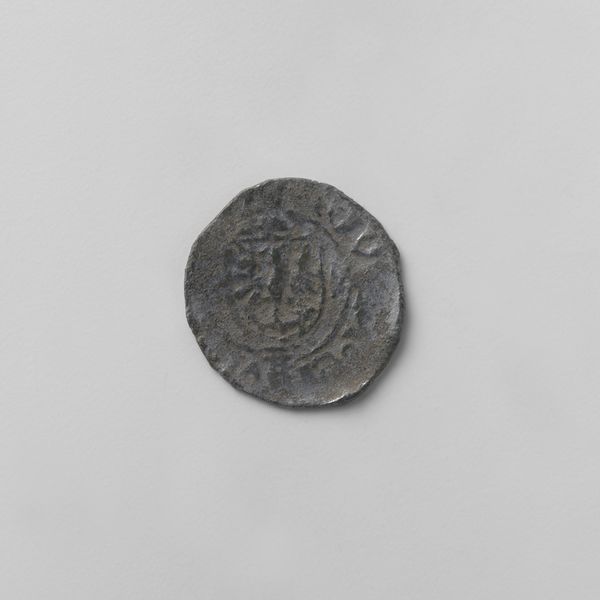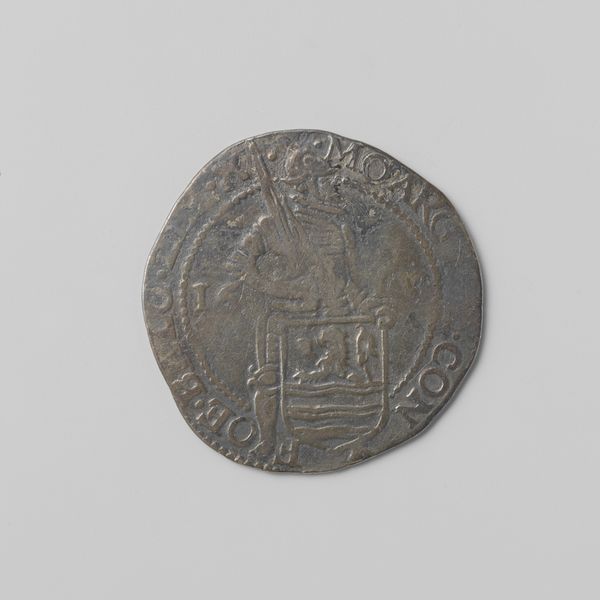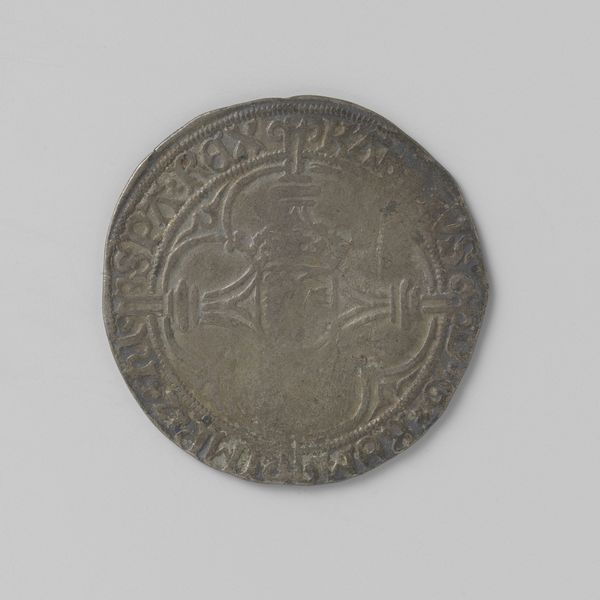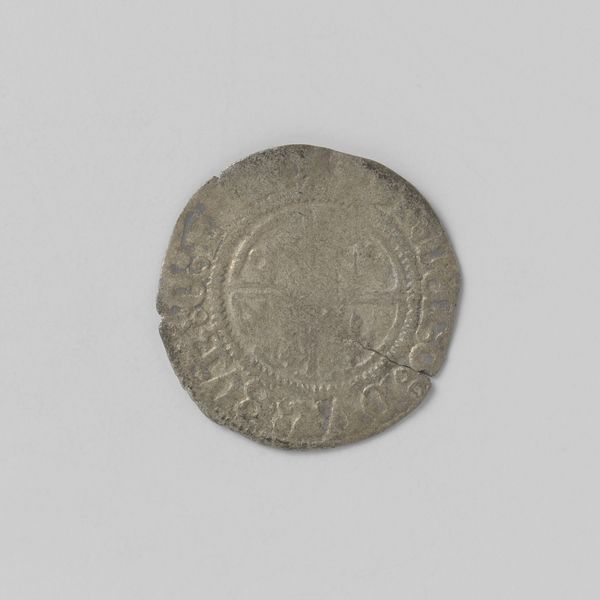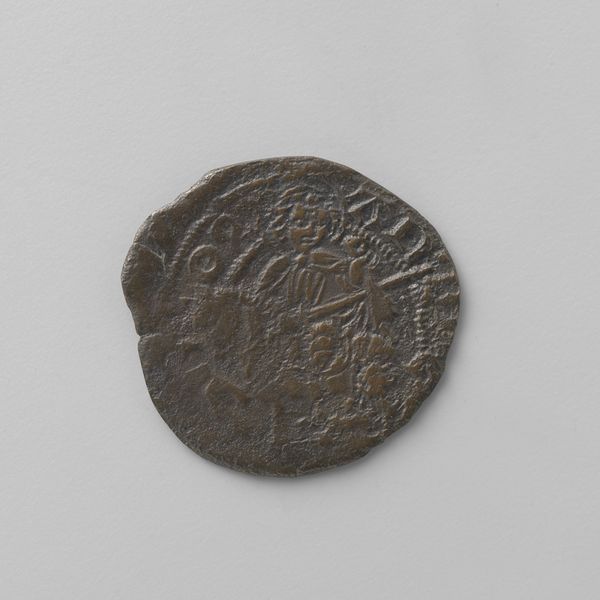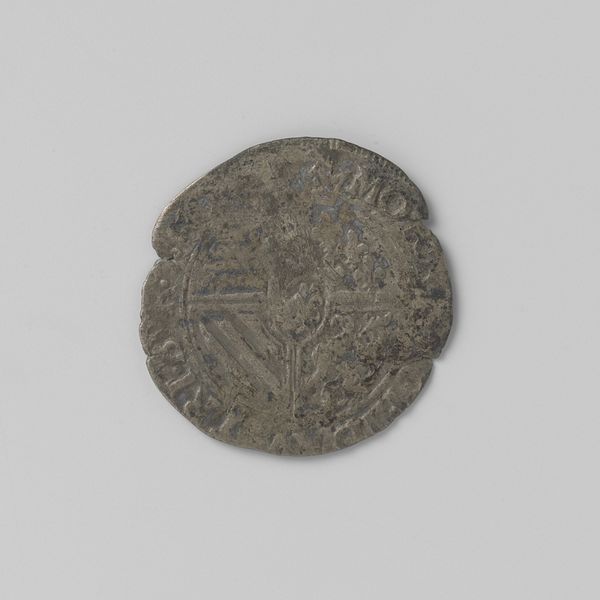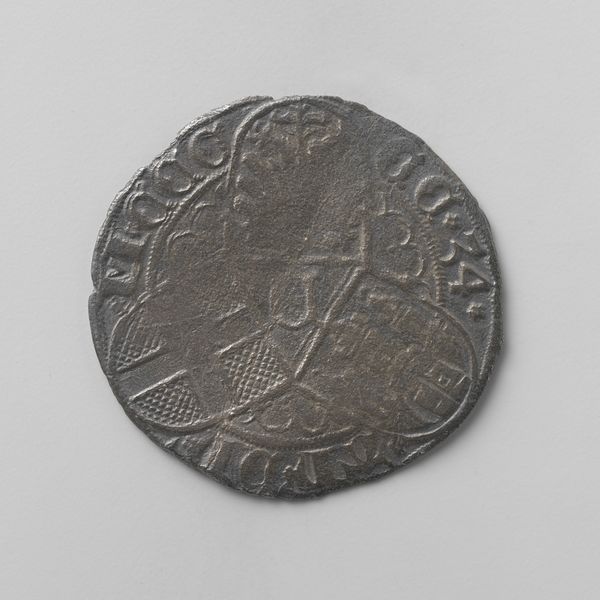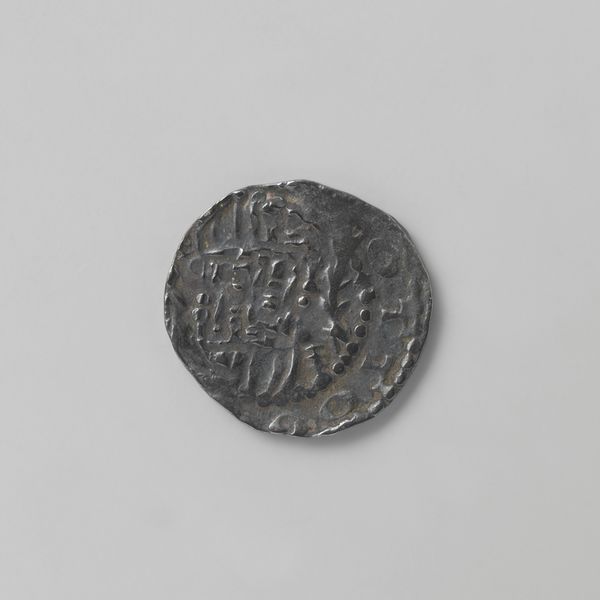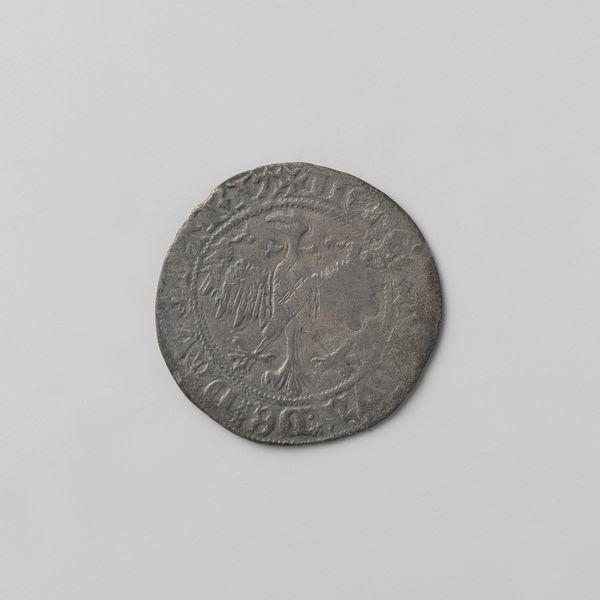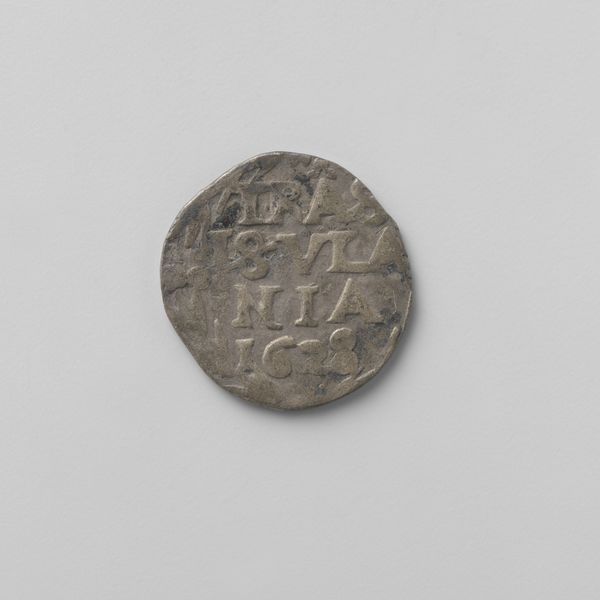
Friese penning van graaf Egbert II, 1068-1090 1068 - 1090
0:00
0:00
metal, sculpture
#
medieval
#
metal
#
sculpture
#
ancient-mediterranean
#
sculpture
Dimensions: diameter 1.9 cm, weight gr
Copyright: Rijks Museum: Open Domain
Curator: This is a Frisian coin minted during the reign of Count Egbert II, somewhere between 1068 and 1090. It's metal, of course, and remarkably well-preserved given its age. Editor: Wow, look at this little guy! It’s so…ancient-feeling. All those tiny hammered details give it a kind of mystical vibe. I can almost smell the forge and the slightly sweaty palms of whoever traded it. Curator: Indeed, these coins offer a fascinating glimpse into the socio-political landscape of Frisia at the time. Egbert II's rule was marked by conflict, and these coins, minted with his image or symbols of his power, were crucial in asserting his authority and economic control. Editor: Authority with those…what are those, faces? Two gnarly little faces staring out from the dark ages! Is that intentional, to strike fear, or did the artist just have a wild sense of humor? They're kinda cute in a ferocious way. Curator: While it’s tempting to ascribe modern interpretations to these symbols, we need to ground our analysis in the context of the medieval period. Some scholars interpret these figures as stylized representations of wolves or other totemic animals, signifying power and protection. Others see connections to older pagan beliefs persisting in Frisia despite Christianization. Editor: Wolves...I can see that, the teeth especially. Gives you the feeling it was worth fighting over, more than just some pocket change. Speaking of pockets, must have felt nice and weighty! Curator: Coins like these circulated among merchants, landowners, and even the peasantry, influencing daily transactions and social hierarchies. Studying their distribution and iconography can reveal power dynamics, trade routes, and cultural exchanges. This provides valuable insight into that intersectional analysis between belief systems, and economy. Editor: To think something so small, held so many stories! Now I feel a weird connection with the person who dropped this coin and lost a bit of their history. Curator: Ultimately, understanding artifacts like this Friese penning asks us to confront our own historical moment and how our actions today will influence future interpretations. It’s also about imagining a history from a modern day analysis. Editor: Totally. Gives you that shiver of knowing you’re just a tiny blip in the vast, swirling timeline. I like it.
Comments
No comments
Be the first to comment and join the conversation on the ultimate creative platform.
